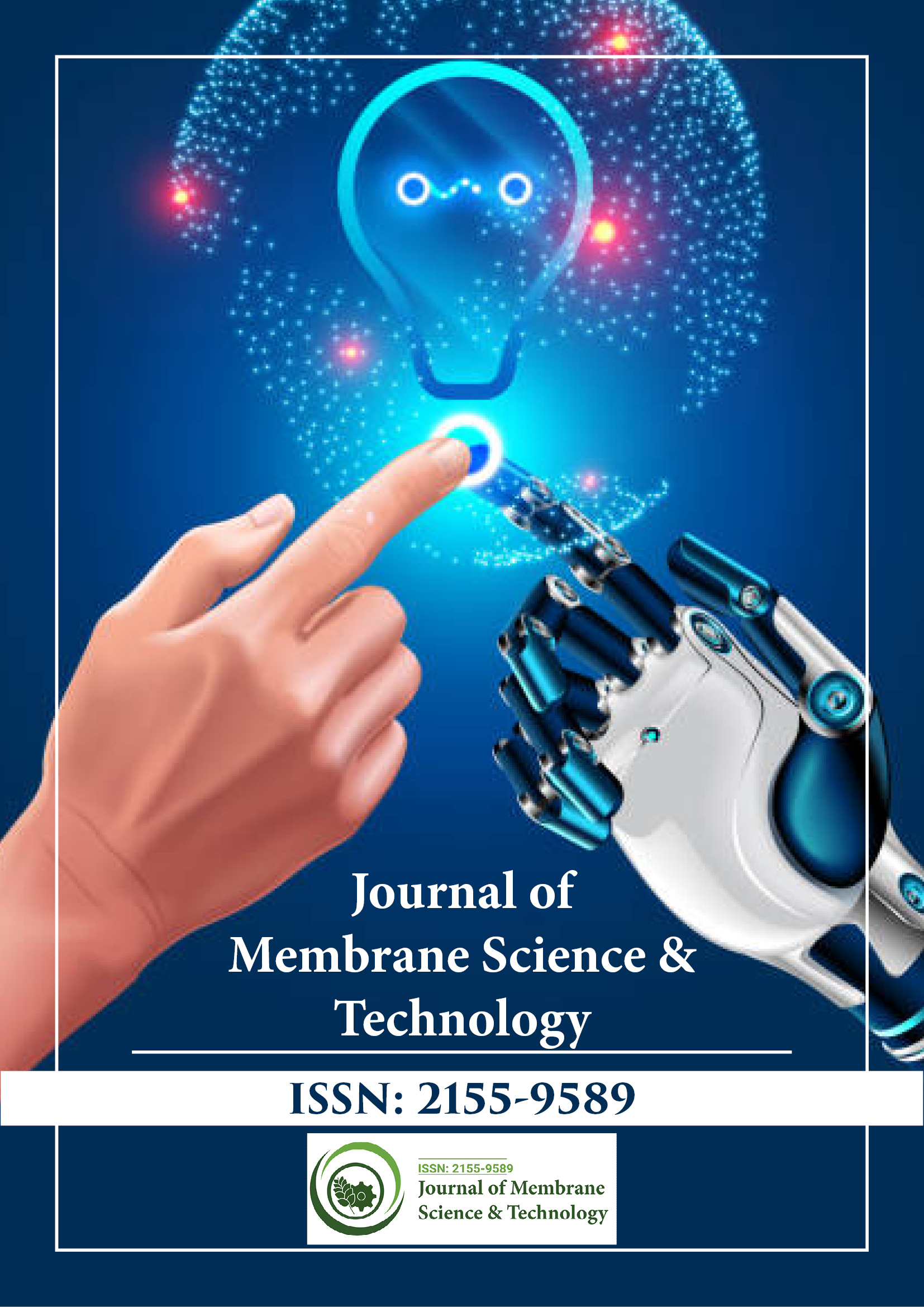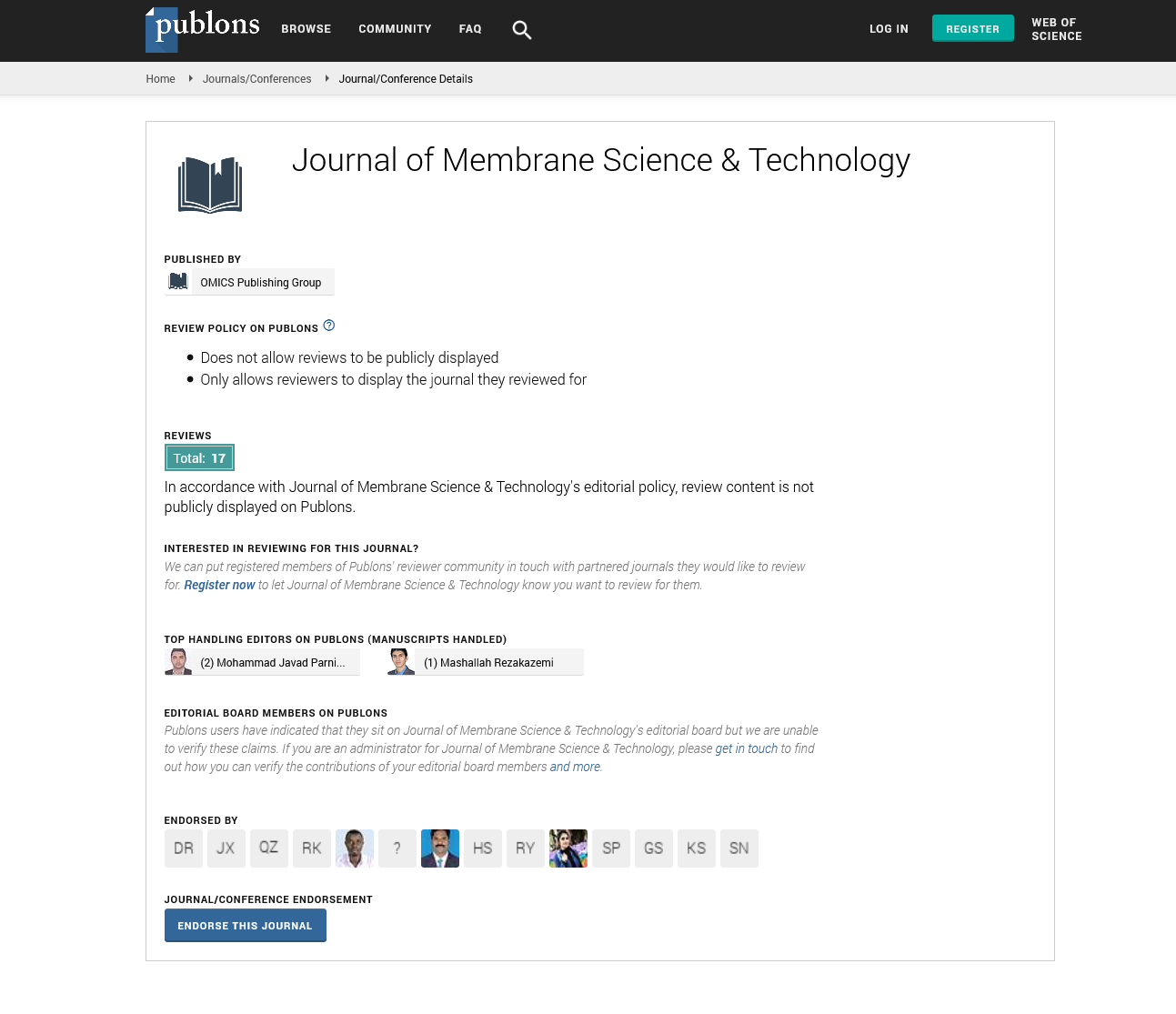Indexed In
- Open J Gate
- Genamics JournalSeek
- Ulrich's Periodicals Directory
- RefSeek
- Directory of Research Journal Indexing (DRJI)
- Hamdard University
- EBSCO A-Z
- OCLC- WorldCat
- Proquest Summons
- Scholarsteer
- Publons
- Geneva Foundation for Medical Education and Research
- Euro Pub
- Google Scholar
Useful Links
Share This Page
Journal Flyer

Open Access Journals
- Agri and Aquaculture
- Biochemistry
- Bioinformatics & Systems Biology
- Business & Management
- Chemistry
- Clinical Sciences
- Engineering
- Food & Nutrition
- General Science
- Genetics & Molecular Biology
- Immunology & Microbiology
- Medical Sciences
- Neuroscience & Psychology
- Nursing & Health Care
- Pharmaceutical Sciences
Opinion Article - (2025) Volume 15, Issue 2
Fundamentals and Industrial Applications of Separation Processes in Chemical Engineering
Lijie Zhou*Received: 30-Apr-2025, Manuscript No. JMST-25-29443; Editor assigned: 02-May-2025, Pre QC No. JMST-25-29443; Reviewed: 16-May-2025, QC No. JMST-25-29443; Revised: 23-May-2025, Manuscript No. JMST-25-29443; Published: 30-May-2025, DOI: 10.35248/2155-9589.25.15.425
Description
Separation processes are a fundamental part of chemical engineering and are vital to nearly every industry that involves the transformation, purification, or recovery of materials. These processes enable the isolation of specific components from mixtures based on differences in physical or chemical properties such as boiling point, solubility, particle size, or molecular weight. Without effective separation techniques, the production of clean water, pharmaceuticals, fuels, food products and countless other materials would be inefficient or impossible. The diversity of separation processes reflects the wide range of mixture types and the specific purity or recovery requirements of different industries.
The most traditional and widely used separation method is distillation, which relies on differences in boiling points to separate liquid mixtures. This process is extensively used in petrochemical refineries to separate crude oil into various fractions such as gasoline, diesel and kerosene. It is also used in the production of alcoholic beverages, solvents and purified chemicals. Despite its broad applicability, distillation is energy- intensive, especially when separating components with close boiling points or dealing with dilute solutions. This has led to growing interest in alternative or hybrid separation methods to improve energy efficiency.
Filtration is another common separation technique, typically used to separate solids from liquids or gases using a porous medium. Filters can vary in pore size and material, allowing for simple straining of particles or more sophisticated separations such as microfiltration, ultrafiltration and nanofiltration. In water treatment, filtration removes suspended solids, bacteria and some dissolved substances. In air purification systems, High- Efficiency Particulate Air (HEPA) filters are used to capture fine airborne particles. Membrane filtration, a subclass of filtration technologies, has gained significant attention due to its modular design, low energy usage and ability to achieve high-purity separations without phase change.
Another widely applied method is adsorption, where specific molecules in a fluid adhere to the surface of a solid material known as an adsorbent. Activated carbon is one of the most common adsorbents and is used to remove contaminants from air and water. Adsorption is essential in gas purification, such as removing carbon dioxide, sulfur compounds, or Volatile Organic Compounds (VOCs) from industrial exhaust streams. Advanced adsorbents such as zeolites, Metal-Organic Frameworks (MOFs) and silica gels have improved the selectivity and capacity of adsorption systems, allowing for more targeted separations.
Extraction processes separate components based on differences in solubility. Liquid-liquid extraction involves transferring a solute from one liquid phase to another immiscible liquid, often for the recovery of valuable compounds from dilute solutions. Solid-liquid extraction, or leaching, is used in industries such as mining, food processing and pharmaceuticals to extract valuable materials from solid matrices. These processes are governed by equilibrium and kinetics and selecting the appropriate solvent is critical for efficiency, selectivity and environmental safety.
Crystallization is another important separation technique used to purify solid compounds. It involves the formation of solid crystals from a solution, melt, or vapor phase. Crystallization is widely used in the production of pharmaceuticals, fine chemicals and food ingredients such as sugar and salt. It not only separates but also purifies substances by allowing impurities to remain in the mother liquor while the desired compound forms solid crystals. Control over nucleation and crystal growth conditions is crucial to ensure product consistency and yield.
Centrifugation separates mixtures by applying a centrifugal force, which drives denser components outward and lighter components inward. It is particularly useful in separating immiscible liquids, suspended solids and biological materials such as cells or proteins. Centrifuges are widely used in laboratories, wastewater treatment facilities and dairy processing plants. Modern ultracentrifuges are capable of separating macromolecules and nanoparticles based on subtle density differences.
Membrane-based separation processes, including reverse osmosis, pervaporation, electrodialysis and gas separation, have gained importance in recent decades due to their energy efficiency and versatility. These methods use selective membranes to separate components without the need for a phase change, making them ideal for applications such as desalination, wastewater treatment, beverage concentration and gas purification. Membrane performance is determined by factors such as selectivity, permeability and resistance to fouling. Advances in membrane materials, including polymer blends and nanocomposites, have significantly expanded the scope of membrane-based technologies.
In industrial practice, separation processes are rarely used in isolation. Instead, they are often combined into integrated systems that leverage the strengths of multiple methods. For example, a chemical plant might use a series of distillation columns followed by adsorption or membrane purification to meet product purity specifications. These hybrid systems are optimized based on factors such as capital cost, operating cost, energy usage, environmental impact and process complexity.
Emerging technologies are pushing the boundaries of conventional separation science. Processes such as supercritical fluid extraction, chromatography, ion exchange and Simulated Moving Bed (SMB) technology are used for high-precision separations, particularly in pharmaceutical and fine chemical industries. Additionally, computational modeling, process simulation and artificial intelligence are being increasingly applied to design and optimize separation processes, reducing experimental time and improving efficiency.
Conclusion
In conclusion, separation processes are indispensable in modern industry and daily life. Their ability to isolate, purify and recover valuable materials underpins the production of clean water, fuels, chemicals, food and medicines. Continued innovation in separation science, driven by demands for sustainability, energy efficiency and product quality, ensures that these processes will remain at the core of industrial development and environmental stewardship for generations to come.
Citation: Zhou L (2025) Fundamentals and Industrial Applications of Separation Processes in Chemical Engineering. J Membr Sci Technol.15:425.
Copyright: © 2025 Zhou L. This is an open-access article distributed under the terms of the Creative Commons Attribution License, which permits unrestricted use, distribution and reproduction in any medium, provided the original author and source are credited.

